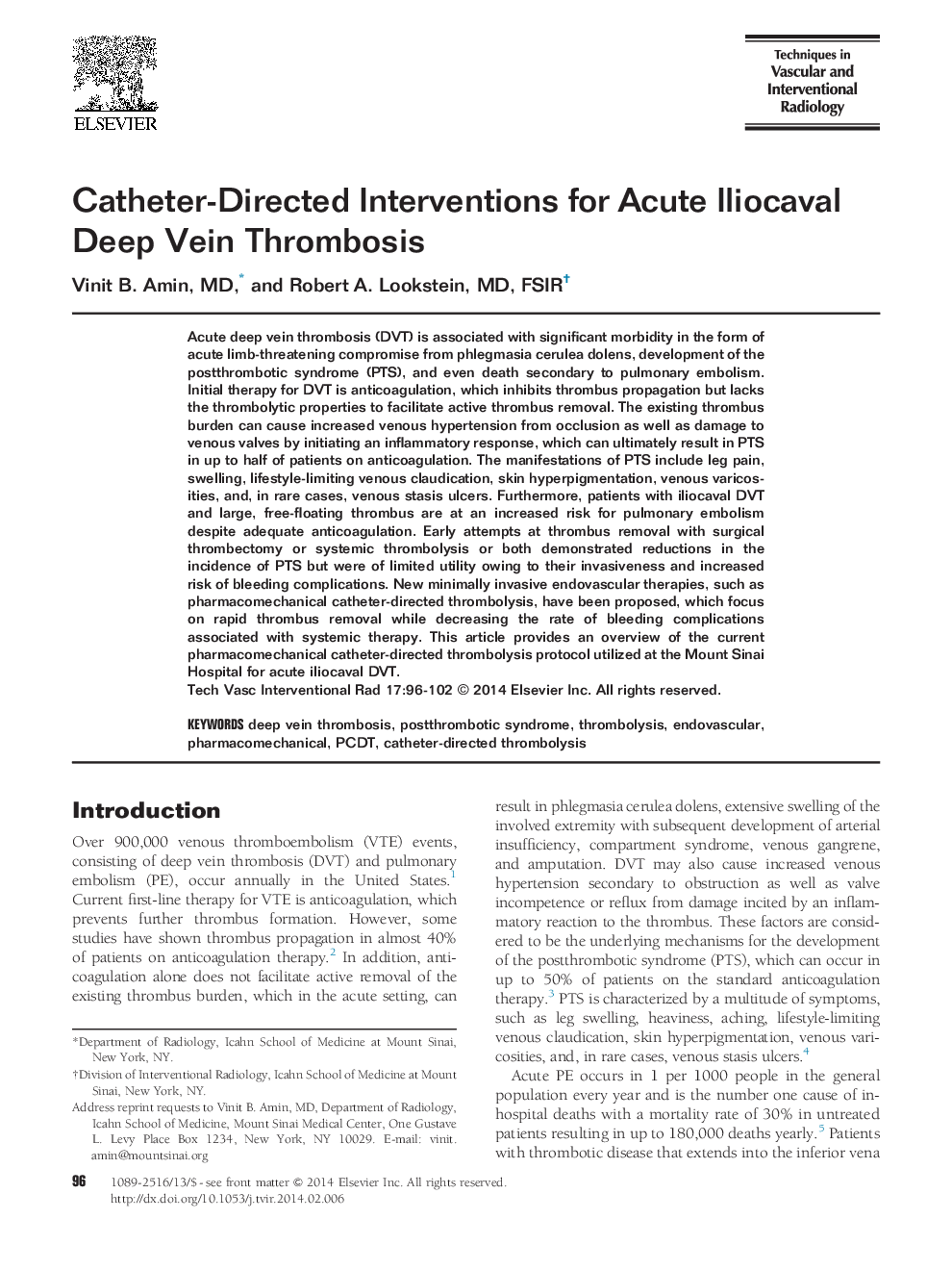| Article ID | Journal | Published Year | Pages | File Type |
|---|---|---|---|---|
| 4251540 | Techniques in Vascular and Interventional Radiology | 2014 | 7 Pages |
Acute deep vein thrombosis (DVT) is associated with significant morbidity in the form of acute limb-threatening compromise from phlegmasia cerulea dolens, development of the postthrombotic syndrome (PTS), and even death secondary to pulmonary embolism. Initial therapy for DVT is anticoagulation, which inhibits thrombus propagation but lacks the thrombolytic properties to facilitate active thrombus removal. The existing thrombus burden can cause increased venous hypertension from occlusion as well as damage to venous valves by initiating an inflammatory response, which can ultimately result in PTS in up to half of patients on anticoagulation. The manifestations of PTS include leg pain, swelling, lifestyle-limiting venous claudication, skin hyperpigmentation, venous varicosities, and, in rare cases, venous stasis ulcers. Furthermore, patients with iliocaval DVT and large, free-floating thrombus are at an increased risk for pulmonary embolism despite adequate anticoagulation. Early attempts at thrombus removal with surgical thrombectomy or systemic thrombolysis or both demonstrated reductions in the incidence of PTS but were of limited utility owing to their invasiveness and increased risk of bleeding complications. New minimally invasive endovascular therapies, such as pharmacomechanical catheter-directed thrombolysis, have been proposed, which focus on rapid thrombus removal while decreasing the rate of bleeding complications associated with systemic therapy. This article provides an overview of the current pharmacomechanical catheter-directed thrombolysis protocol utilized at the Mount Sinai Hospital for acute iliocaval DVT.
